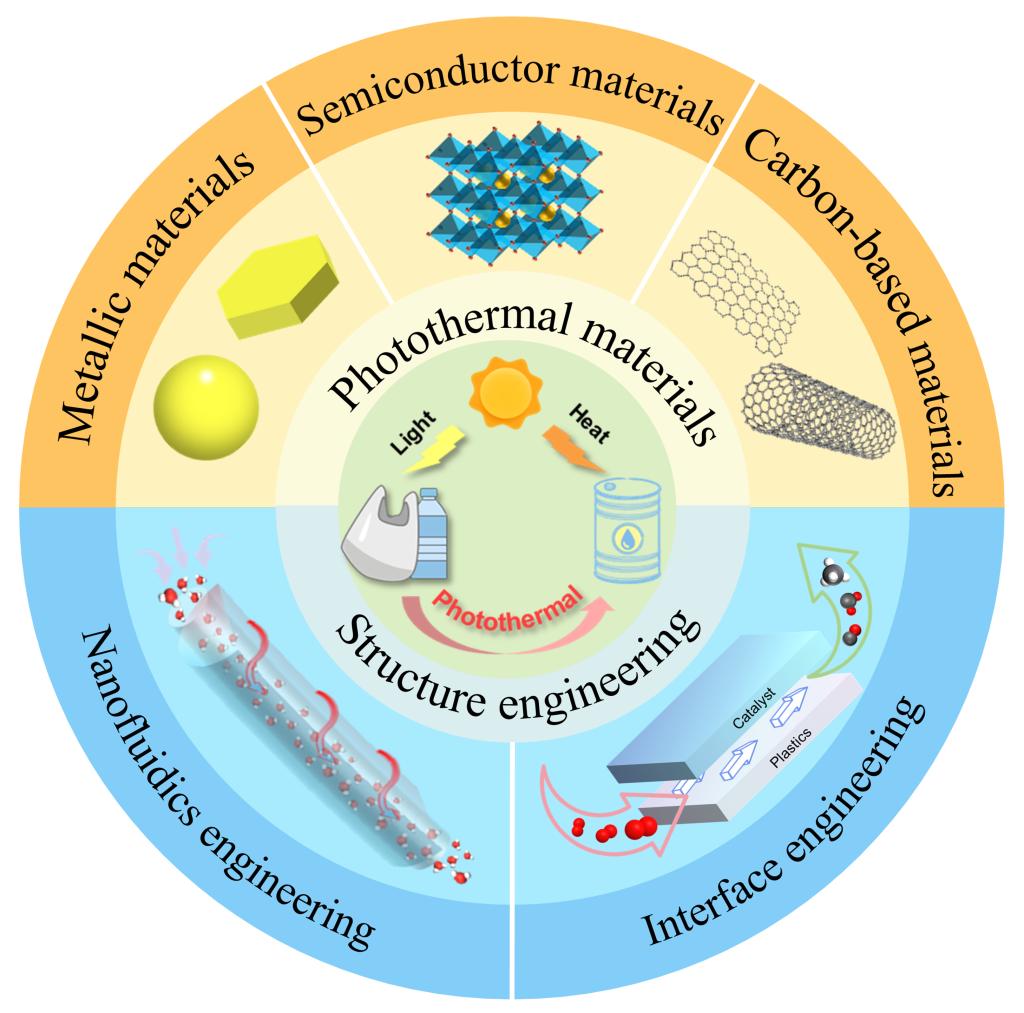《Adv. Funct. Mater.》: Recent Progress for Designing of Catalysts for PhotothermalConversion of Plastic Wastes
Dongpo He,+ Guangbing Huang,+ Ziyao Zhou,+ Qinyuan Hu, Jinyu Ding, Jiacong Wu, Mengqian Li, Xiaowen Ruan,* Xingchen Jiao,* Yi Xie*
In the context of the global struggle against plastics, catalytic upgrading and recycling of plastics has been the subject of considerable attention as a powerful strategy for achieving both environmental remediation and value-added chemical production. Compared with conventional recycling methods, the emerging photothermal catalysis methodology integrates photochemical and thermal catalytic processes, which outstands with features of high conversion efficiency and mild reaction conditions. Herein, a comprehensive review for the recent research progress of photothermal conversion of plastic waste is presented. First, the types of photothermal catalysts for plastic upcycling are classified into three categories, metallic materials, semiconductor materials, and carbon-based materials, based on the photothermal conversion mechanism. Their potential mechanisms as powerful photothermal converters and future directions in photothermal conversion of plastics are highlighted. Furthermore, the logical structural design of photothermal catalytic materials are summarized to enhance photothermal performance in plastic conversion. Finally, future opportunities and challenges in this promising but nascent field are discussed, and future research directions for photothermal conversion of plastics are presented.

Figure 1. The design of plastic photothermal catalytic materials, whichcontains photothermal materials and structure engineering.
